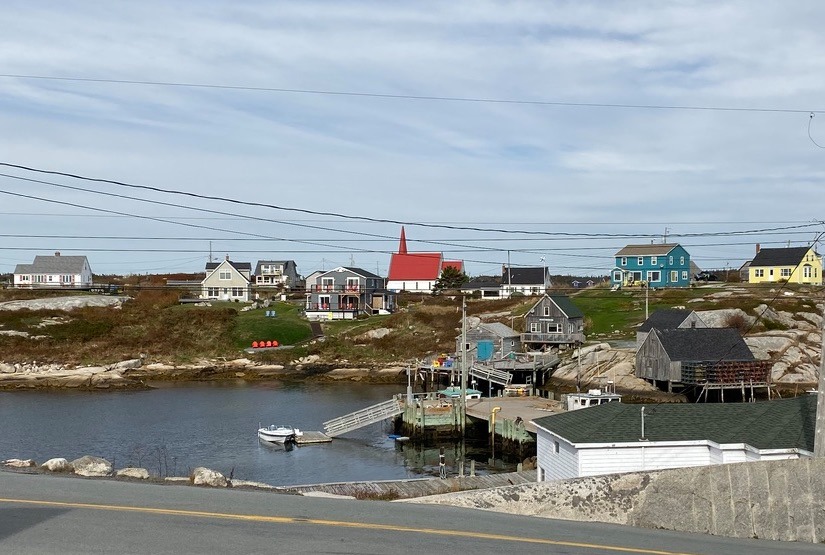Of course I had to visit the world famous Peggy’s Cove. Instead of renting a car I decided on a bus tour. It came with a guide who told stories along the way.
Before leaving on the bus tour I had lunch. I could not leave Halifax without having a donair. 2 Doors down is one of Chef Cliff Finn’s restaurants – just 2 doors down from Chives.
Chef Ian has prepared a different take on the donair – all the elements are there – flatbread, seasoned PEI beef, sweet sauce, tomatoes, mozzarella topped with arugula. A pint of Saltbox Irish Red and I was ready for the tour.

One thing I did learn is that Peggy’s Cove is more than just the lighthouse. The cracked, granite rocks are what gives Peggy’s the distinctive look. The rocks were originally formed in Africa – yes, that’s right. Made of shale and sandstone. About 400 million years ago the African tectonic plate and North American collided. The collision created heat which turned the rocks into slate and quartzite.
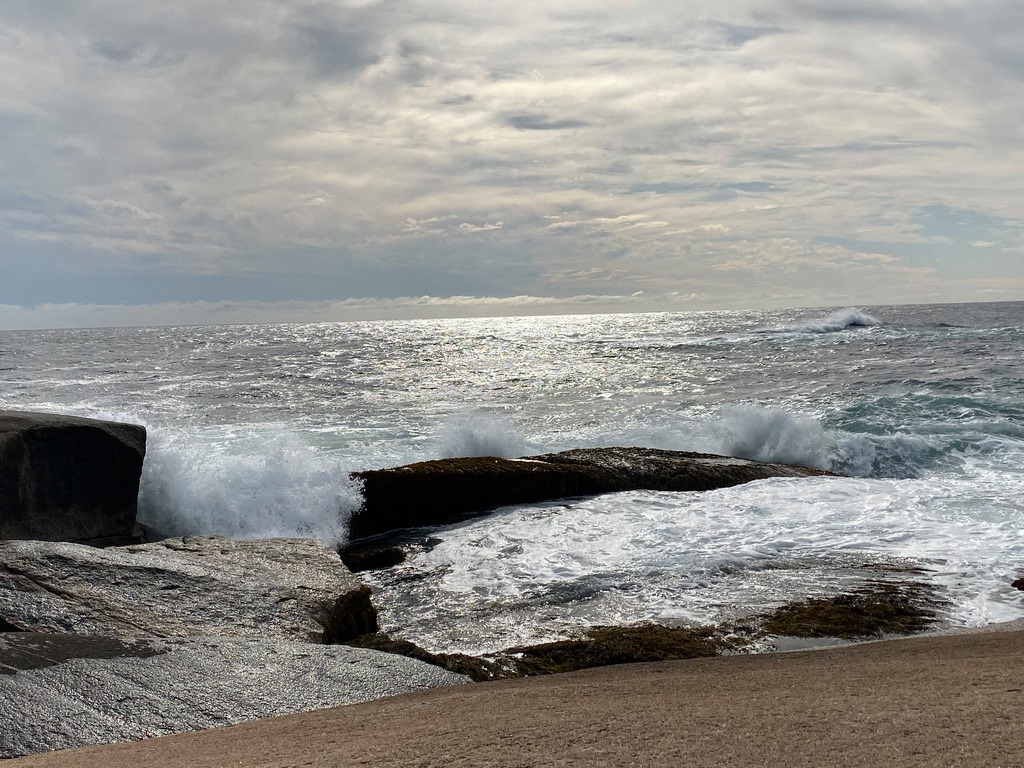
However, molten granite was pushed up from the earth’s core. It replaced the slate – which had eroded due to weather. As the granite cooled, cracks formed. Then, about 12,000 years ago, the retreating glaciers scraped the rocks creating more cracks.
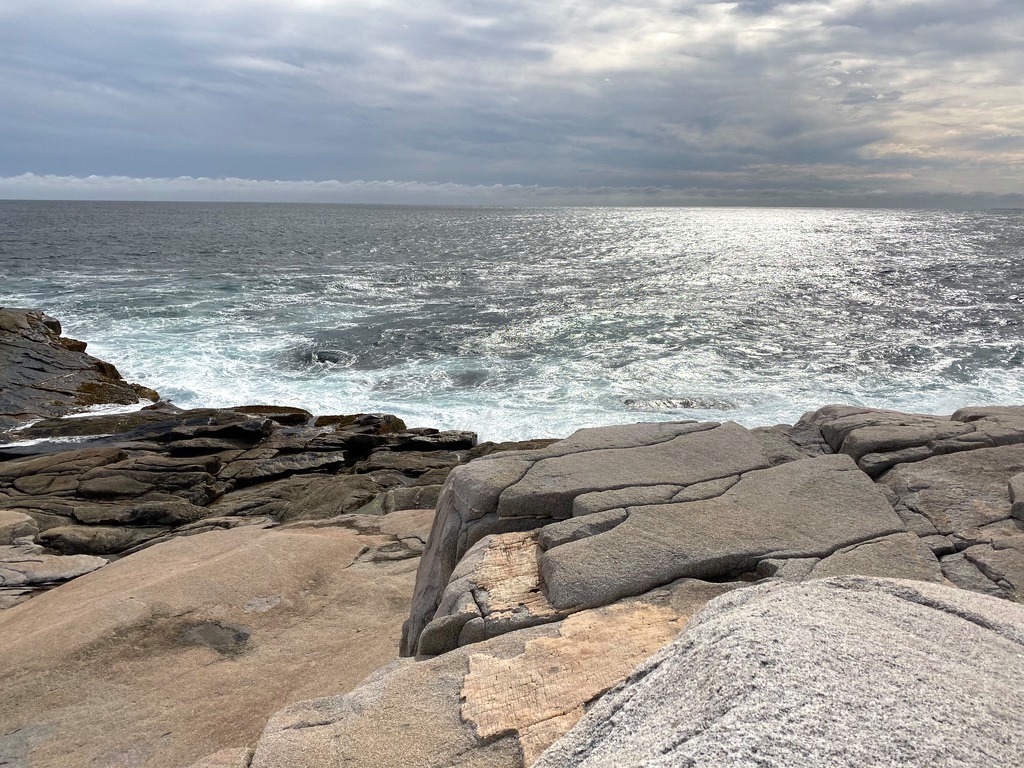
To tell the truth, I much preferred sitting on the rock watching the waves than hanging out with the tourist crowd by the lighthouse.
The fall colours had just started this week. Going out of the city in a tour bus gave me a chance to really appreciate the scenery.
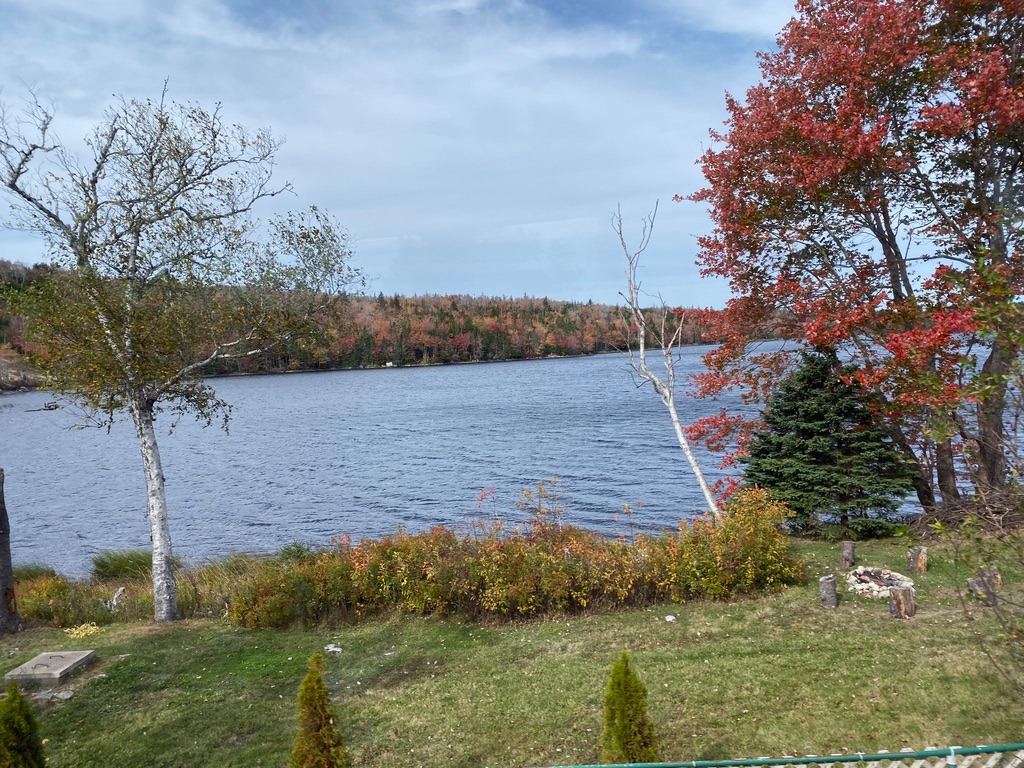
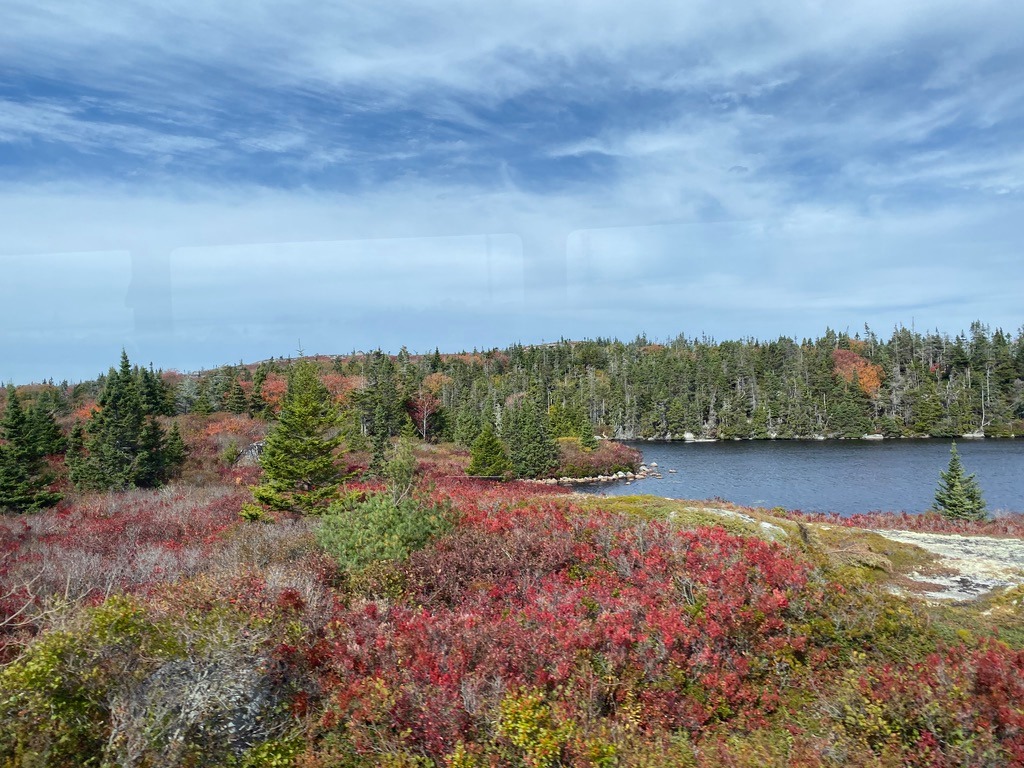
As you come into Peggy’s Cover there are these boulders scattered all around. They are called glacial erratics and were dragged around by the retreating glaciers.
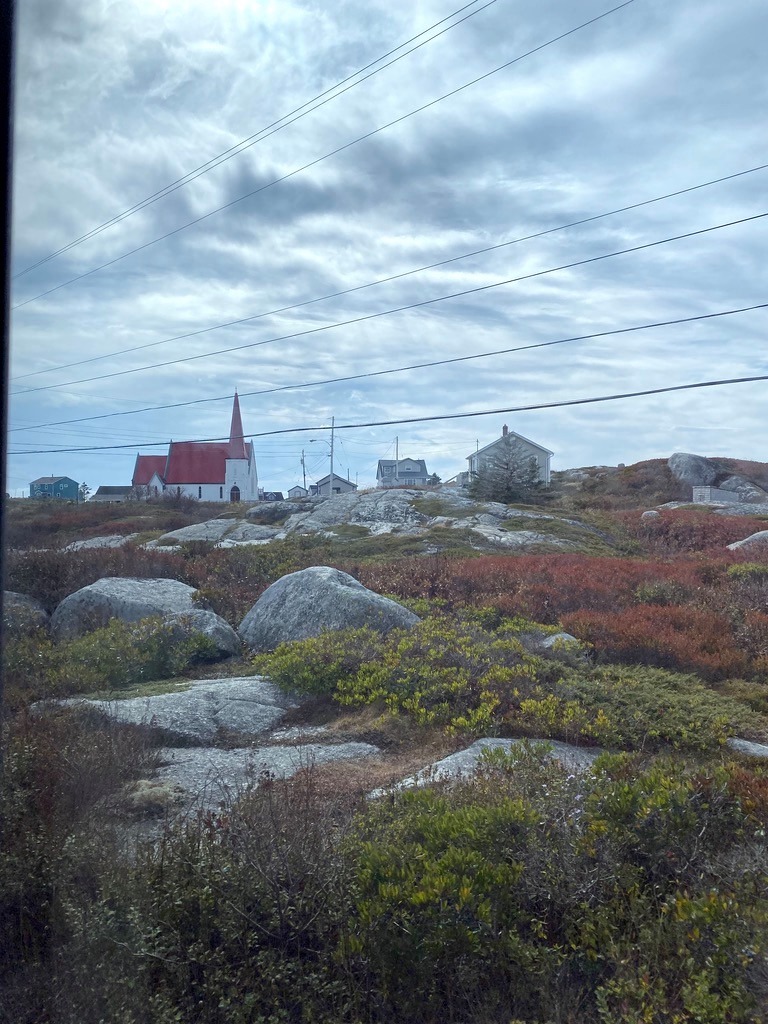
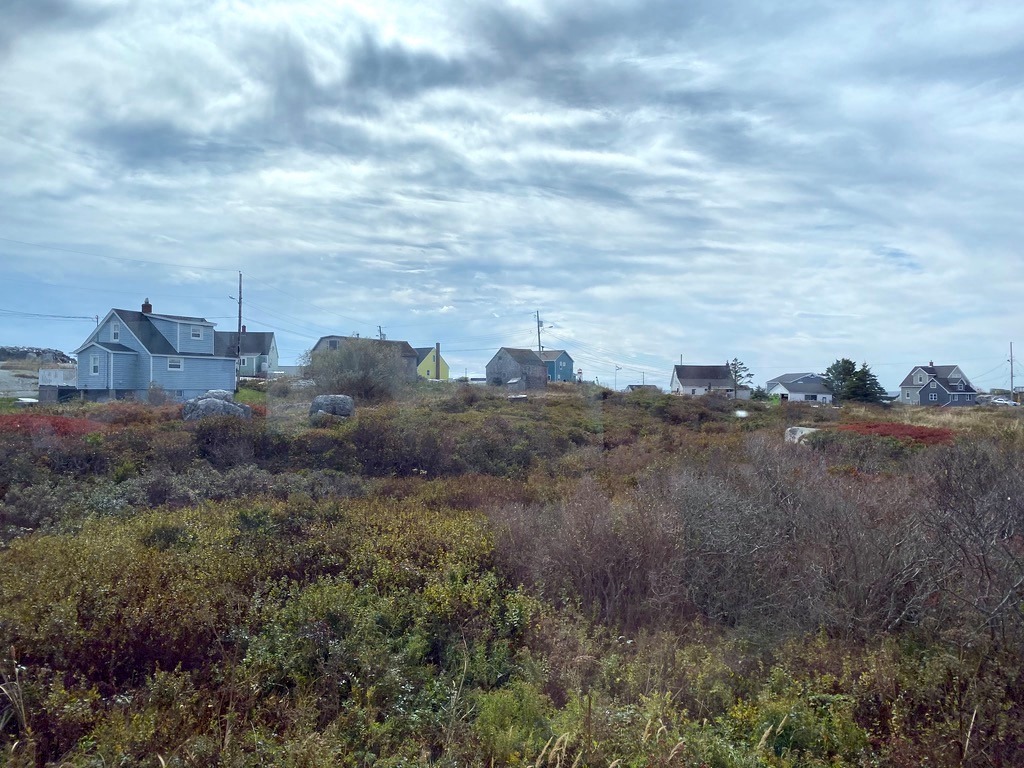
The Monument to the Fisherman of Nova Scotia by W. E. de Garthe. de Garthe studied art in Montreal, Mount Allison University, New York and Italy. This was his private project that depicts 32 figures carved into the granite wall.
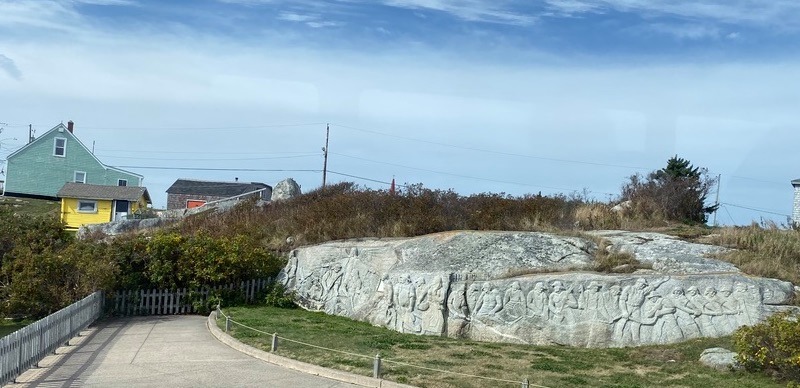
This is the cove of Peggy’s Cove. In the 1900s the settlers had to remove all the rock to make the cove. They had 2 boats, side by side. They would blast the rock with dynamite. The rocks were then chained to the boats. As the tide came in, it would lift the rocks. The boats would then haul the rock out to sea and dump it.
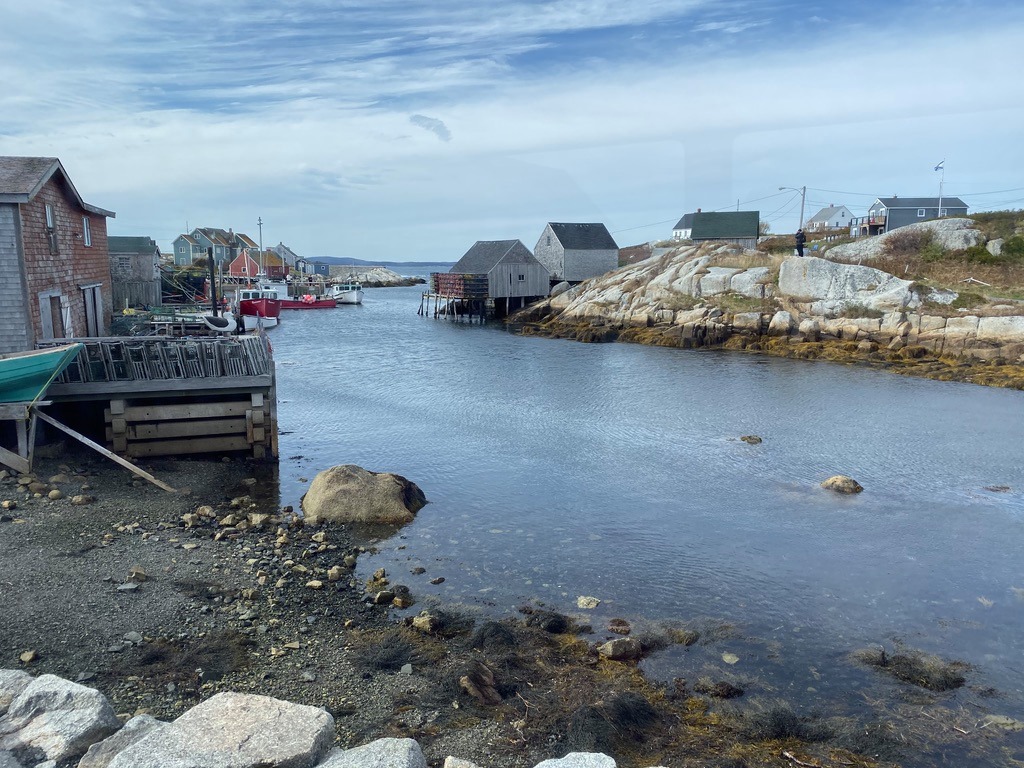
With the rocks cleared, ships could now enter with cargo and leave with fish. There was a gate leading to the community and children would open it for visitors. The gate was used to keep the cows out of the gardens planted near the homes.
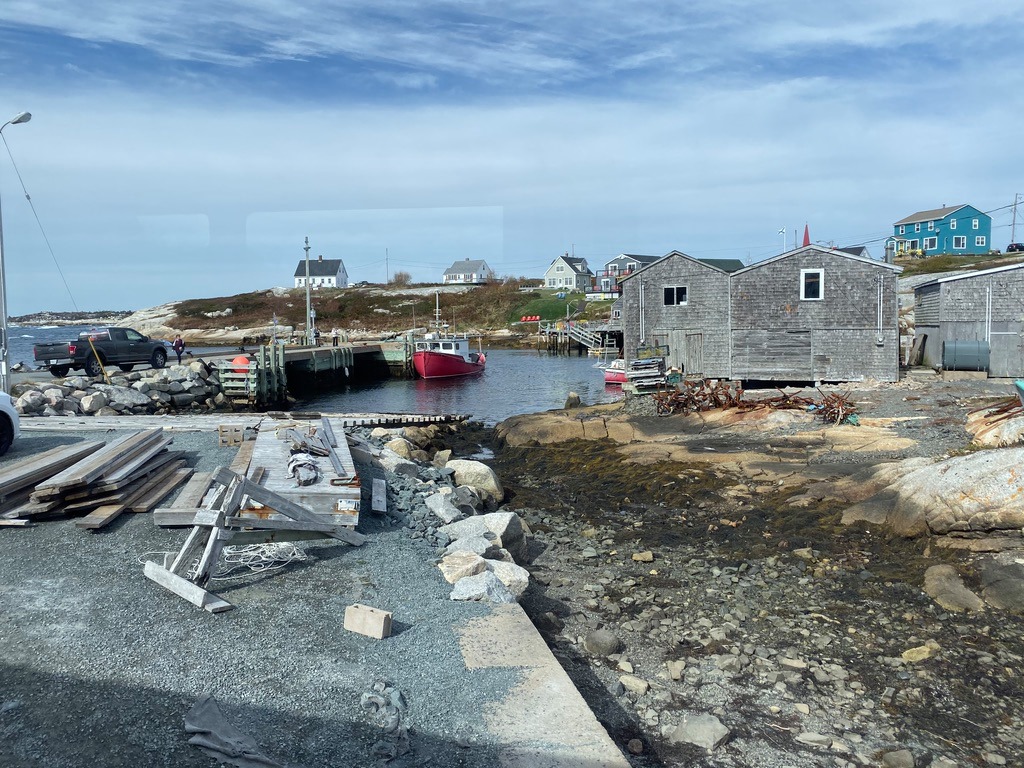
The obligatory selfie with the Peggy Point Lighthouse – the most photographed lighthouse in Canada – probably the world.

Peggy’s Point Lighthouse is its correct name. It was a post office at one time. A family lived here to maintain the gas light. It is now automated.
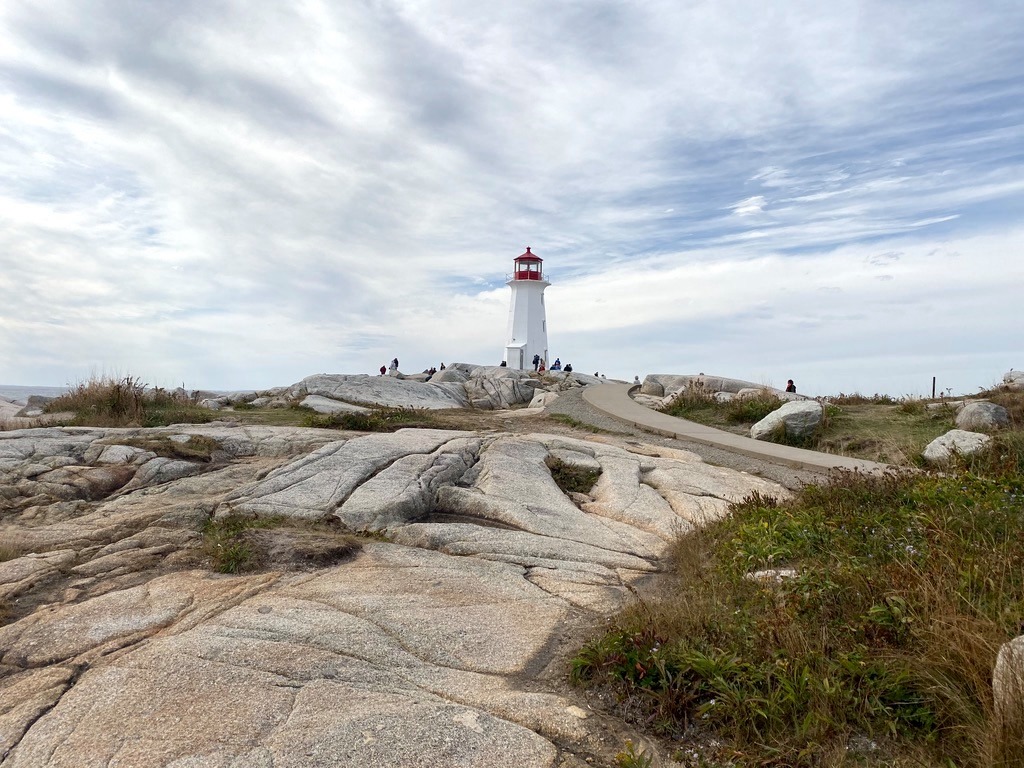
A few warning signs not to get close and avoid the black rock because they are slippery.

The Sou’ Wester is the restaurant and gift shop. They will stamp your passport with a Peggy’s Cove seal . Pages 16/17 is the Nova Scotia page and features Pier 21.
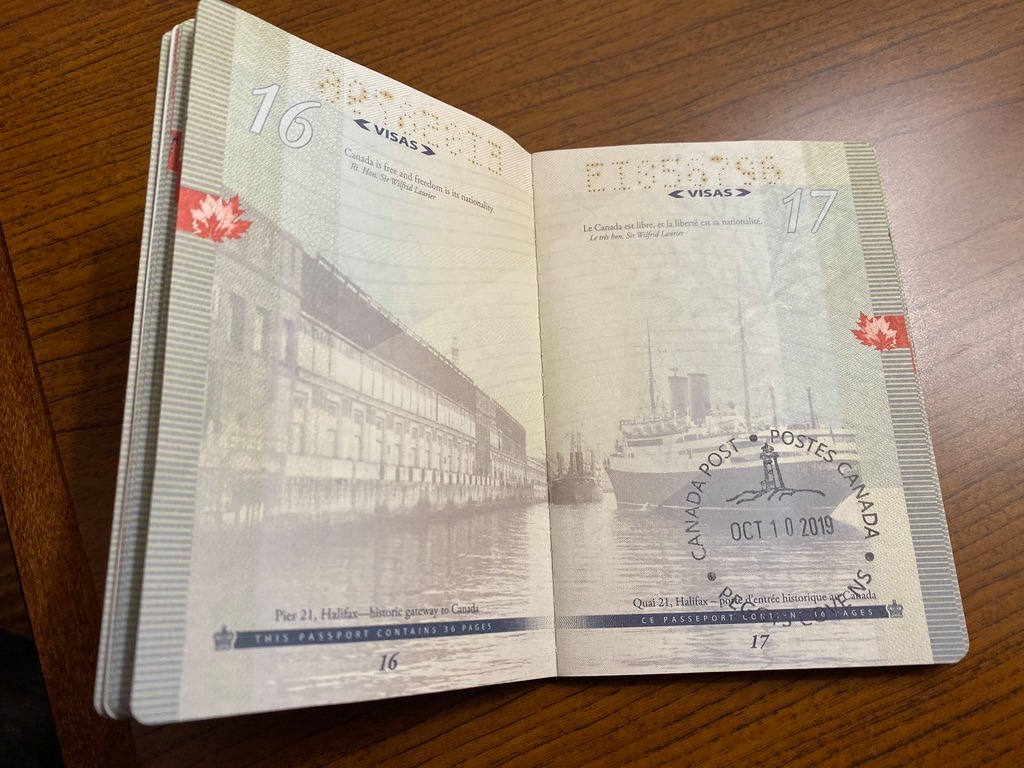
As you can see, the village of Peggy’s Cove is not spectacular given it’s reputation. But that is what Nova Scotia is all about, simplicity in the midst of the spectacular ocean.
